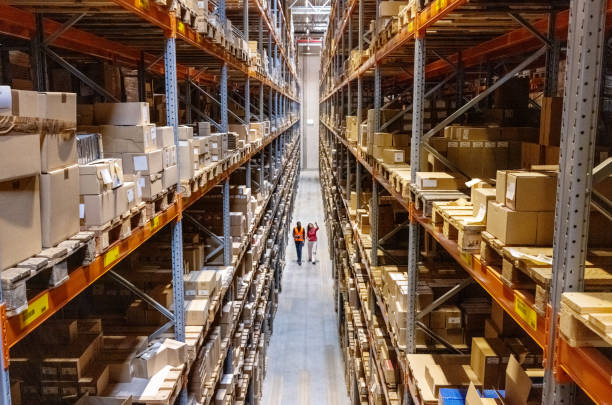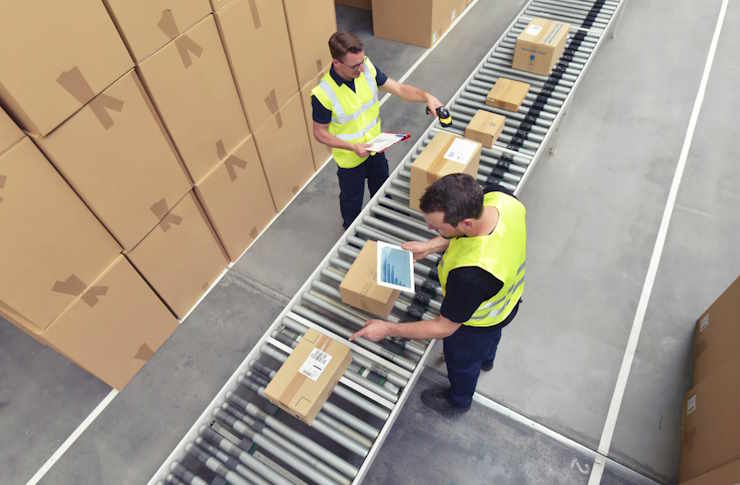Overview of Organised Packing Activities in US Facilities
The packaging industry forms a critical component of the American supply chain ecosystem, employing millions of workers across diverse settings from small local operations to massive distribution centers. Organized packing activities encompass a wide range of functions including product preparation, assembly, labeling, quality control, and shipment preparation. These roles vary significantly in their complexity, from straightforward manual tasks to positions requiring specialized training on automated systems. As e-commerce continues its exponential growth, particularly accelerated by recent global events, the demand for efficient and skilled packaging personnel has evolved significantly across various sectors of the economy.

Understanding the Packaging Workforce Landscape
The packaging workforce in the United States is remarkably diverse, spanning multiple industries including food production, pharmaceuticals, consumer goods, and e-commerce fulfillment. According to industry data, packaging positions typically require varying levels of skill, from entry-level packers to specialized machine operators. The Bureau of Labor Statistics categorizes many of these positions under “Production Workers” and “Material Moving Workers,” with the packaging subset representing a significant portion of these classifications. Workforce demographics include both permanent staff and seasonal workers, with distribution centers often increasing their packaging workforce by 30-40% during peak retail periods such as the holiday season.
Advanced Packaging Workforce Management Software Solutions
Modern facilities have increasingly adopted sophisticated packaging workforce management software to optimize operations and track productivity. These systems typically include features such as shift scheduling, performance analytics, and training management modules specifically designed for packaging environments. Leading software solutions like JDA Warehouse Management, Manhattan Associates’ Labor Management, and HighJump’s warehouse solutions offer specialized modules for packaging line efficiency. These platforms can reduce labor costs by 10-15% through optimized scheduling and provide real-time visibility into packaging line performance, allowing supervisors to make data-driven decisions about resource allocation and identify training needs across the packaging operation.
Manual vs. Automated Packing Positions in Modern Facilities
The packaging industry continues to evolve with automation technology, creating a bifurcated workforce need. Manual packing positions remain essential for handling delicate, irregular, or customized items where human dexterity and decision-making outperform machines. These roles typically require physical stamina, attention to detail, and basic quality control knowledge. Meanwhile, automated packing positions involve operating, monitoring, and maintaining packaging machinery such as case erectors, filling machines, and robotic palletizers. These roles generally require technical training and understanding of equipment specifications, preventive maintenance procedures, and troubleshooting protocols. Most facilities operate with a hybrid model, combining both manual and automated processes to maximize efficiency while maintaining flexibility for varying product requirements.
Logistics and Packing Workforce Solutions for Operational Efficiency
Modern facilities implement various logistics and packing workforce solutions to enhance operational efficiency and address common challenges in the packaging environment. Cross-training programs allow workers to rotate between different packing stations, reducing repetitive strain injuries while increasing workforce flexibility. Many facilities have adopted team-based approaches where small groups are responsible for complete packaging processes rather than individual repetitive tasks. Advanced facilities implement ergonomic workstation designs that accommodate workers of different heights and abilities while reducing physical strain. Performance incentive programs tied to quality metrics rather than just speed help maintain high standards while encouraging productivity.
Warehouse Packing Employment Trends and Forecast
The warehouse packing sector continues to demonstrate strong employment trends despite increasing automation. The U.S. Bureau of Labor Statistics projects steady growth for packaging and filling machine operators, with an emphasis on workers who can adapt to increasingly technical environments. Regional distribution hubs in areas like Pennsylvania, Kentucky, Tennessee, and Texas show particularly strong demand for packaging personnel. Wage ranges typically span from $13-22 per hour for entry-level positions, with higher compensation for specialized or supervisory roles. The rise of specialized fulfillment centers has created demand for workers with specific packaging expertise in areas like food safety, pharmaceutical handling, or fragile item protection.
The Impact of Technology on Packaging Line Operator Requirements
Technology has fundamentally transformed packaging line operator requirements across U.S. facilities. Today’s operators increasingly need basic digital literacy to interact with computerized control systems that manage packaging lines. Vision systems and quality control technology require operators to interpret digital feedback and make appropriate adjustments. Many facilities now use tablets or workstation computers for documenting production data, requiring basic data entry skills. Augmented reality applications are beginning to appear in advanced facilities, projecting packing instructions or quality control guides onto workspaces. These technological advancements have shifted hiring priorities toward candidates with both mechanical aptitude and comfort with digital interfaces, creating opportunities for workers willing to develop these hybrid skill sets.
The organized packing activities in U.S. facilities continue to evolve as technology, consumer demands, and economic factors reshape the industry. While automation changes the nature of many positions, it also creates new opportunities for workers with technical skills and adaptability. The industry’s future will likely feature continued integration of digital and physical workflows, with successful facilities developing workforce strategies that balance efficiency with the irreplaceable human elements of problem-solving, quality control, and adaptability to changing production requirements.






